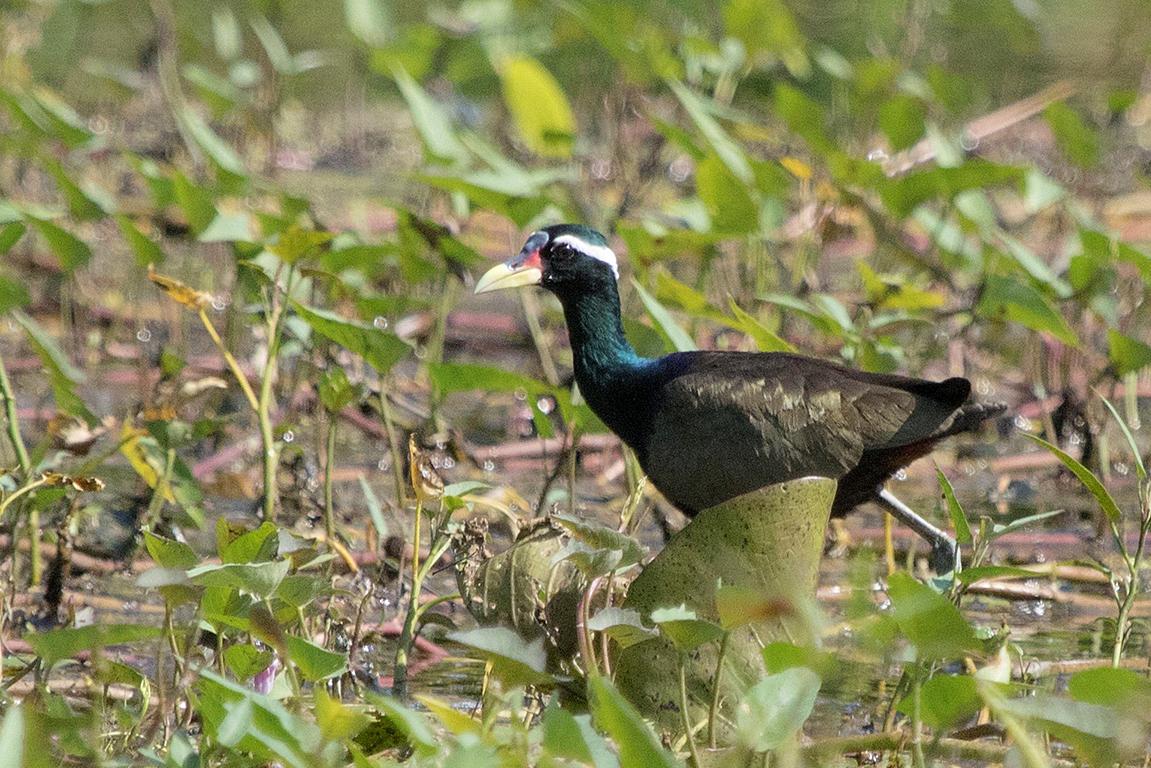Bronze-winged Jacana

Sam Roi Yot, Thailand
Bronze-winged jacanas are distributed widely across the Indian Subcontinent and Southeast Asia mainly at low elevation.
Habitat
Bronze-winged jacanas inhabit freshwater wetlands.
Feeding
Bronze-winged jacanas walk on the wetland vegetation using their long toes and forage for plant material, insects and other invertebrates picked of the floating vegetation and the surface of the water..

Juvenile
Breeding
The male bronze-winged jacana constructs a small platform of stems and leaves which is supported by a mat of vegetation. The male also incubates the clutch of usually 4 conical eggs which are a glossy brown with irregular scrawls of black. The male is solely responsible for raising the chicks..
Wildfile Specials
- Up to 94% of bronze-winged jacana eggs are eaten by predators including birds and turtles.
- Bronze-winged jacana fathers shelter chicks between their wings and carry them to safety.
- Female bronze-winged jacanas are polyandrous. They maintain a harem with up to 4 males who compete to mate with the female. The female will mate with several males who will take responsibility for incubating a clutch of eggs and raising the chicks which hatch from them.
- The male who receives a clutch of eggs for incubation will often destroy other clutches of eggs that they suspect are fathered by other males.
- Male bronze-winged jacana make a yelling call as part of their mating ritual. Females mate with males that yell the most.
- Jacanas have the biggest feet in the bird world relative to their size.
- If threatened, bronze-winged jacanas will sometimes completely submerge